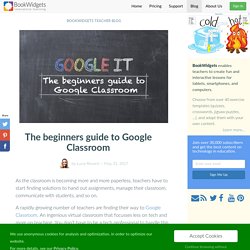

Create Interactive Lessons for Google Classroom using TES Teach. Using technology to support project-based learning. Assignment 1: Setting the stage First, you’ll need to introduce the challenge of reducing plastic in our oceans and identify key facts about pollution in our oceans.
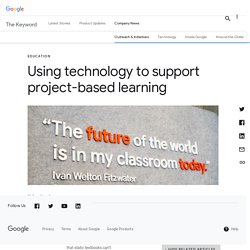
Step 1: Use Google Classroom to introduce the task. You can use Google Classroom to create individual copies of materials for each student, in just one click. As an example, click here to make a copy of this lesson plan. If you’re using a different Learning Management System (LMS), Course Kit lets you integrate that LMS with G Suite. Step 2: Use “Explore” to find and cite a key quote. Open the Google Doc provided in Step 1 and click the “Explore” button in the bottom-right of the document. Step 3: In the Google Sheet, use “Explore” to analyze waste data for Austin, Texas. Here, the “Explore” feature leverages the same machine learning technology used by Google Search and Google Assistant. How to Use Digital Storytelling in Your Classroom. This how-to article accompanies the feature "Film School: Making Movies From Storyboard to Screen. " Storytelling is a vital skill with seemingly unlimited applications. Done well, it can have a magical effect -- moving, enlightening, or entertaining audiences of any size.
We tell stories to woo lovers, calm children, or reassure ourselves. Lawyers rely on the power of storytelling to vividly re-create crimes to juries, archaeologists conjure former civilizations, and teachers make abstract concepts real to their students. In today's digitized world, visual storytelling is a favorite classroom tool, and the affordability and accessibility of technology such as iMovie provides opportunities not imagined twenty years ago. 1. Think of movies you adore, movies you could watch again and again. 2. Though students need some knowledge of how to use equipment, teaching about technology should never be the focus of the curriculum.
Technology and the At-Risk Student: 3 Ways to Change Their Learning Outcomes – Fishtree. Students who are labeled “at risk” face a unique set of learning challenges than their peers.
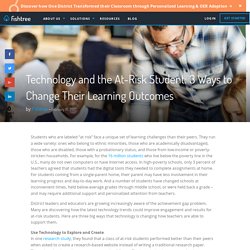
They run a wide variety: ones who belong to ethnic minorities, those who are academically disadvantaged, those who are disabled, those with a probationary status, and those from low-income or poverty-stricken households. For example, for the 16 million students who live below the poverty line in the U.S., many do not own computers or have Internet access. In high-poverty schools, only 3 percent of teachers agreed that students had the digital tools they needed to complete assignments at home. Future Ready Librarians: Curating Digital Tools and Resources Webinar. Mark Ray: Look at that.
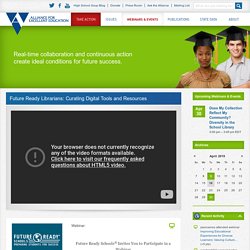
Good afternoon, Future Ready Librarians and lovers of Future Ready Librarians. My name is Mark Ray. I am really excited to be hosting this afternoon’s webinar, a Future Ready Librarian webinar. Look who we have in the boxes. Let’s say hi to Joyce. Joyce Valenza: Good, Mark. 10 Ways to Differentiate Instruction with Technology. By Heidi Raki.
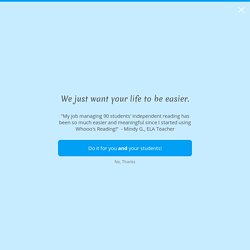
Using Chatterpix in Your Classroom - Teach Create Motivate. Have you ever heard of the app Chatterpix?
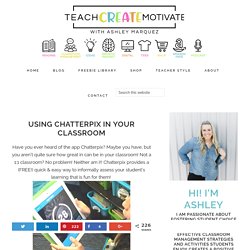
Maybe you have, but you aren’t quite sure how great in can be in your classroom! Not a 1:1 classroom? No problem! Neither am I!! Chatterpix provides a (FREE!) I have used this app in science and social studies mainly, but it can be used for ANYTHING! In Social studies I had my students tell me about Hellen Keller, Harriet Tubman, and more heroes. Here is an example of a Chatterpix on Harriet Tubman:
10 Ways to Gamify Your Classroom-STEM Village. Gamification isn't simply the concept of making things fun - it also has a purpose to motivate people toward reaching specific goals.
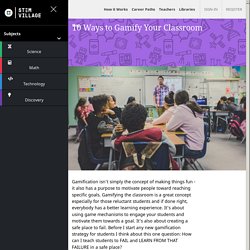
Gamifying the classroom is a great concept especially for those reluctant students and if done right, everybody has a better learning experience. 8 Engaging Ways to use Technology in the Classroom to Create Lessons That Aren’t Boring. Are you tired of delivering the same old lectures on the same subjects year after year? Are you using the same lesson materials over and over and wishing you could make learning in your classroom more interactive? While lectures and lessons can be informative and even “edutaining” when delivered with passion and good materials by knowledgeable experts, sadly many traditional lectures and lessons are boring, and even worse often ineffective.
The good news is that the Web is loaded with great free tools that can enable teachers to bring a sense of fun and engagement to their lessons. Of course, you do need devices with Internet access to give these tools a try. Even if you don’t have computers or tablets available in your classroom, the fact that an increasing number of High School and college students have smartphones is making it easier than ever to leverage technology to create engaging, active lessons students enjoy working on. 1. 2. 3. 4.
The beginners guide to Google Classroom. As the classroom is becoming more and more paperless, teachers have to start finding solutions to hand out assignments, manage their classroom, communicate with students, and so on.
